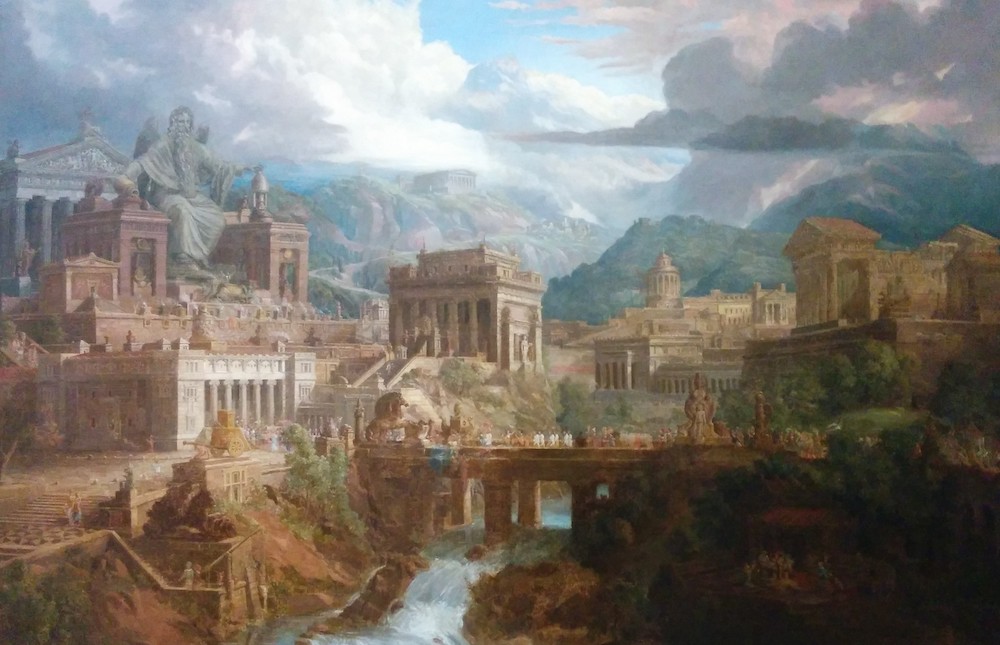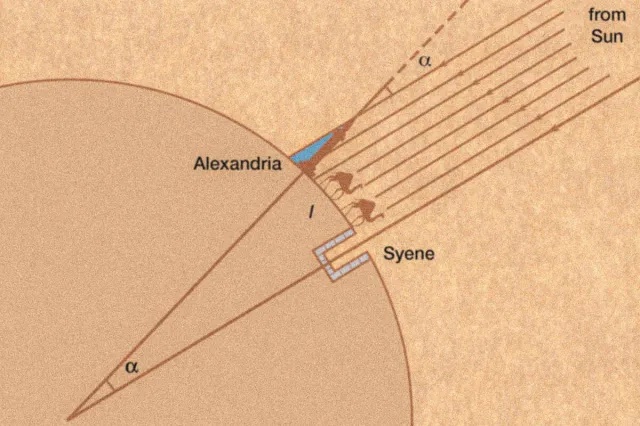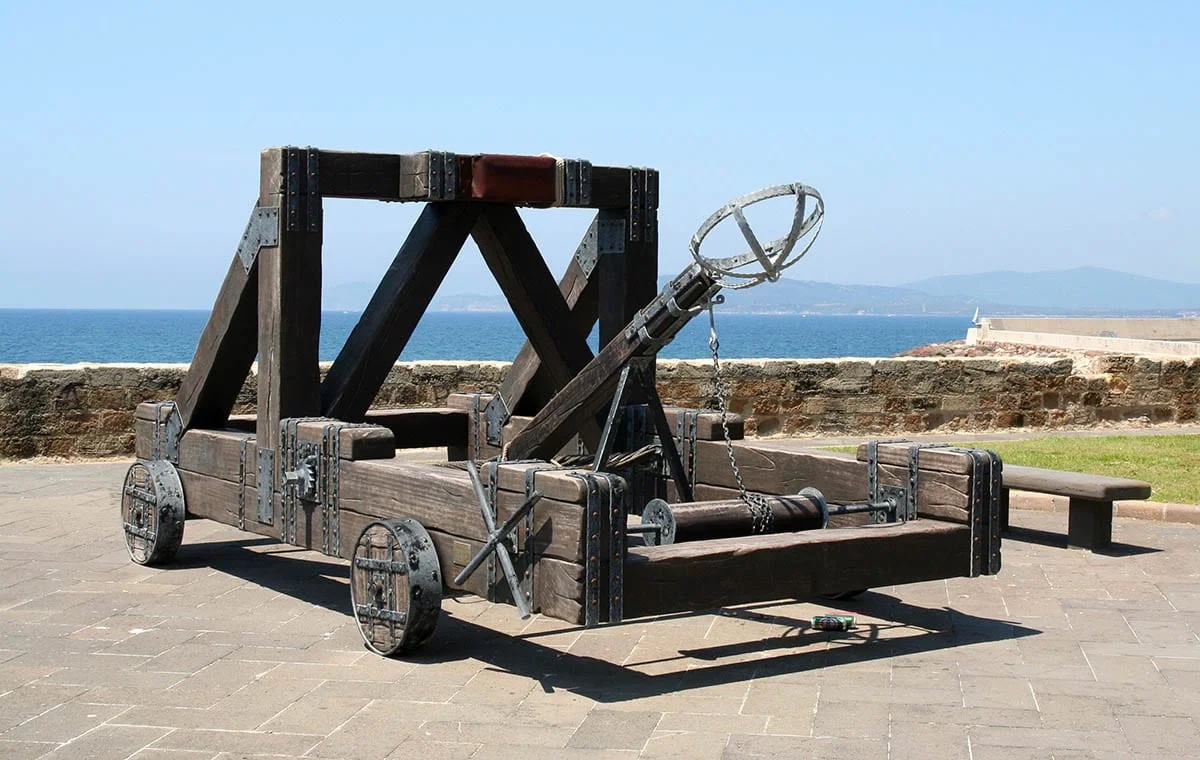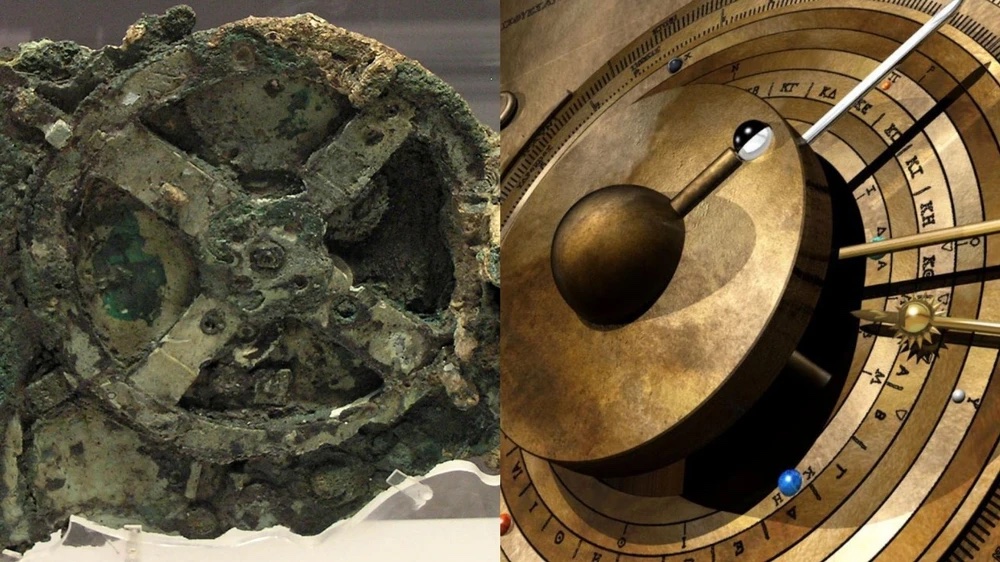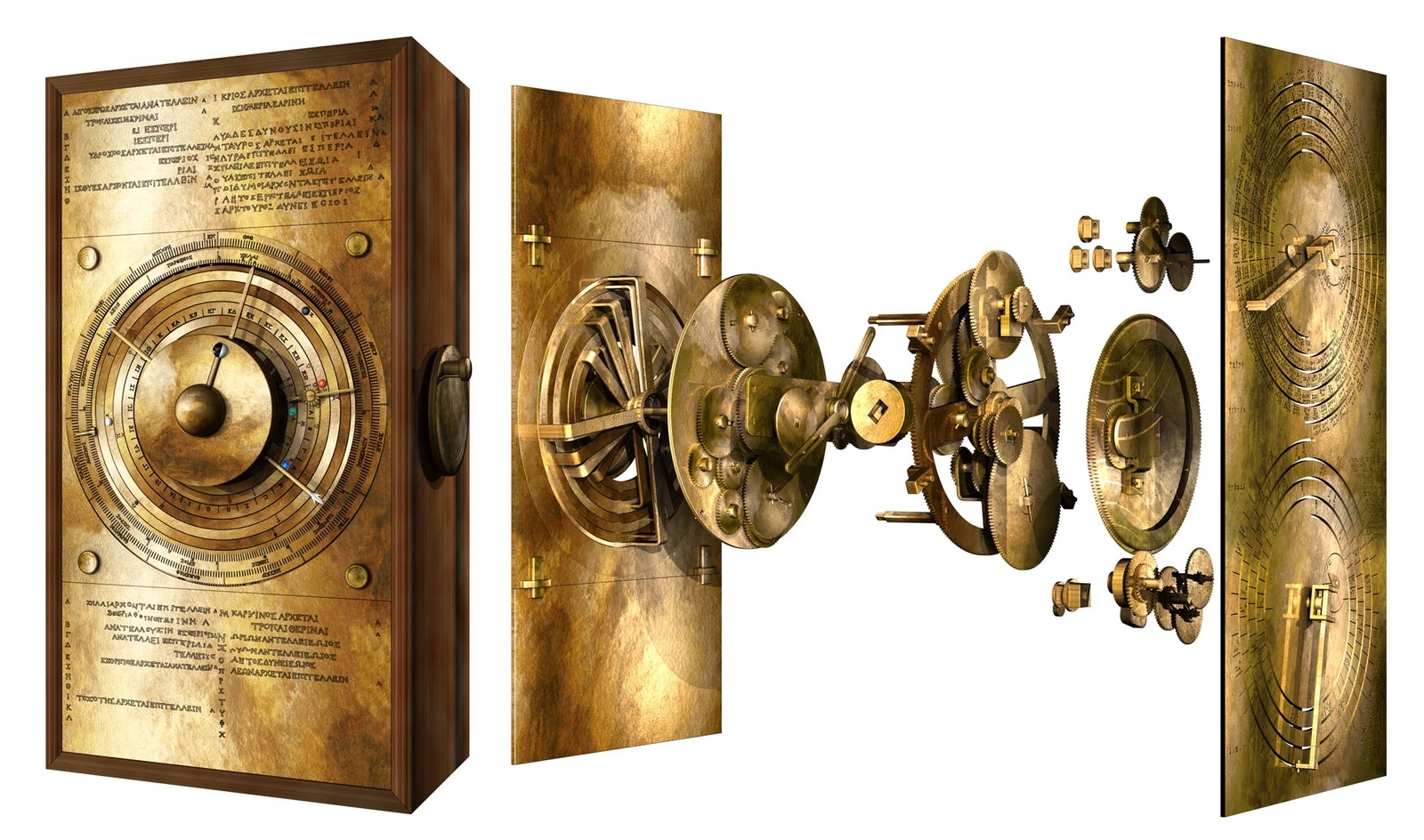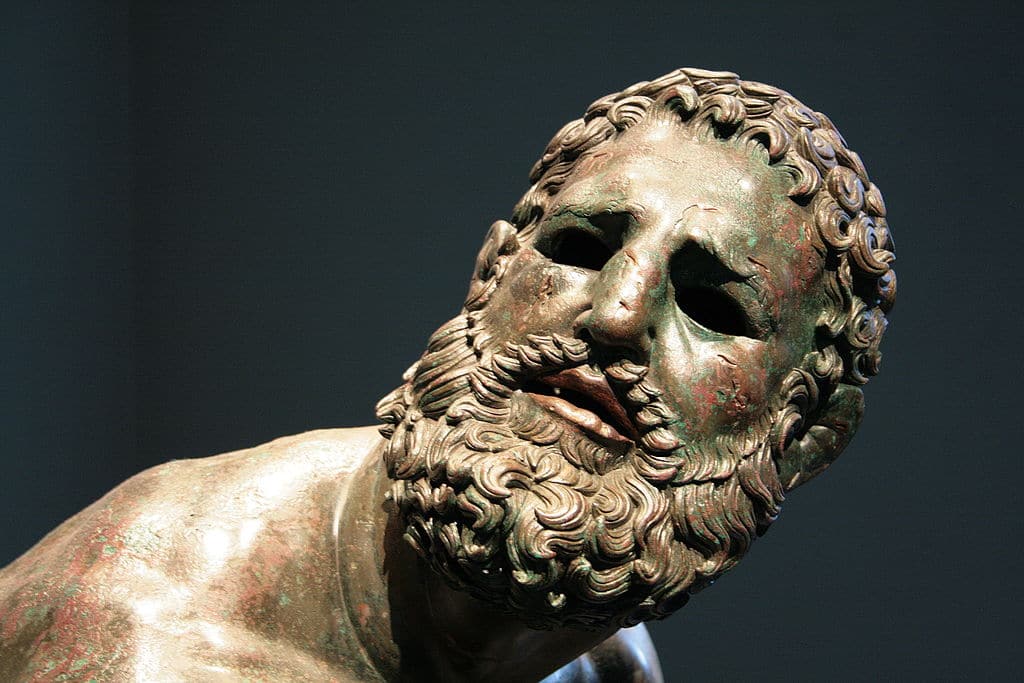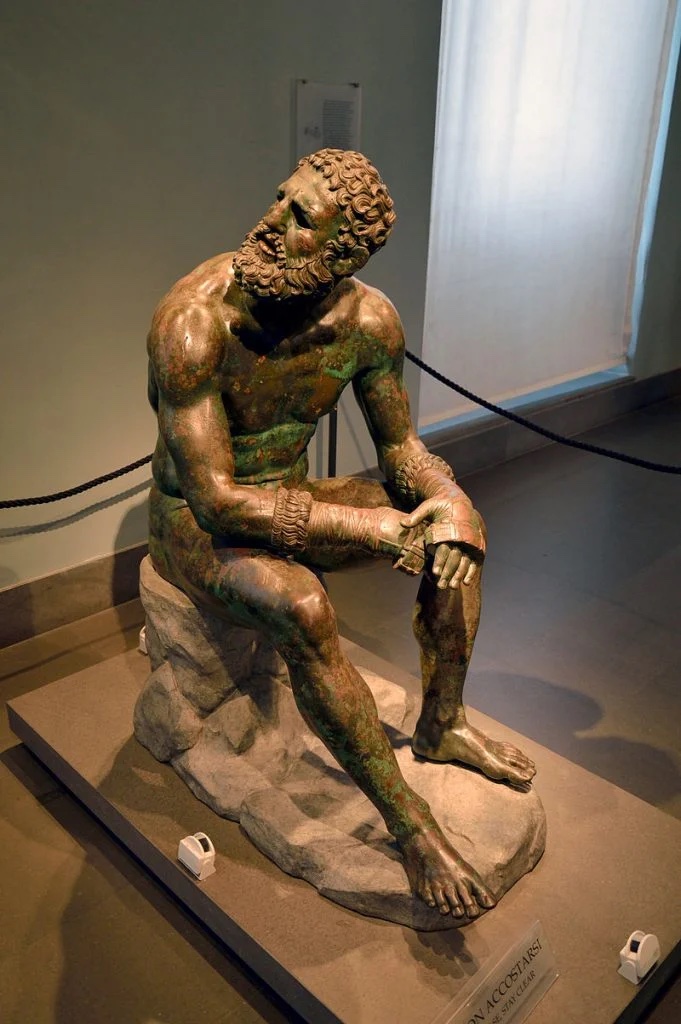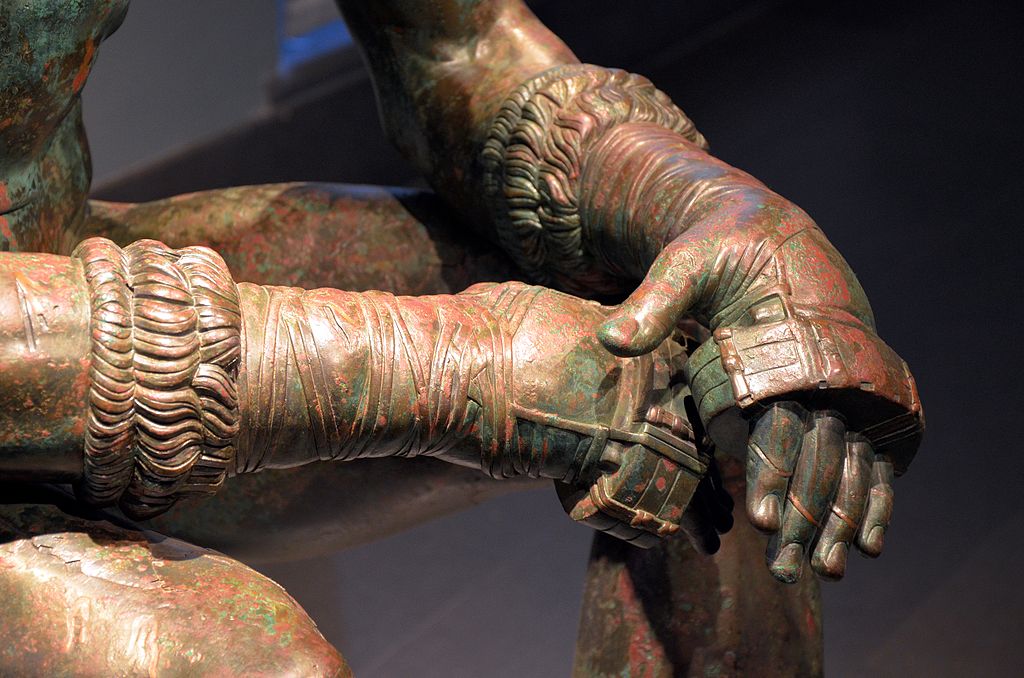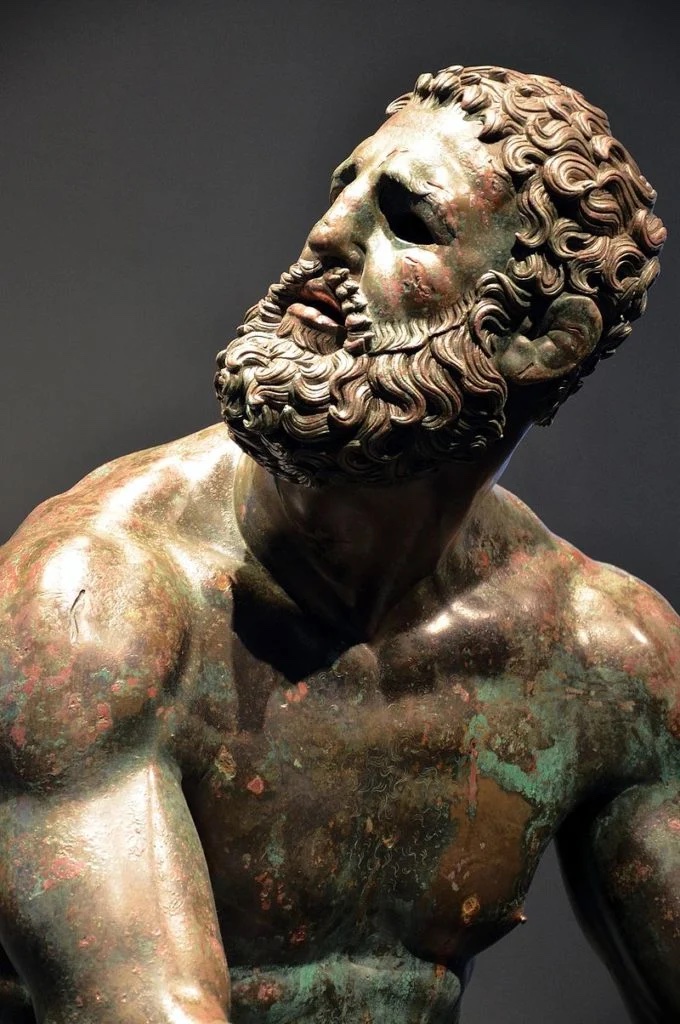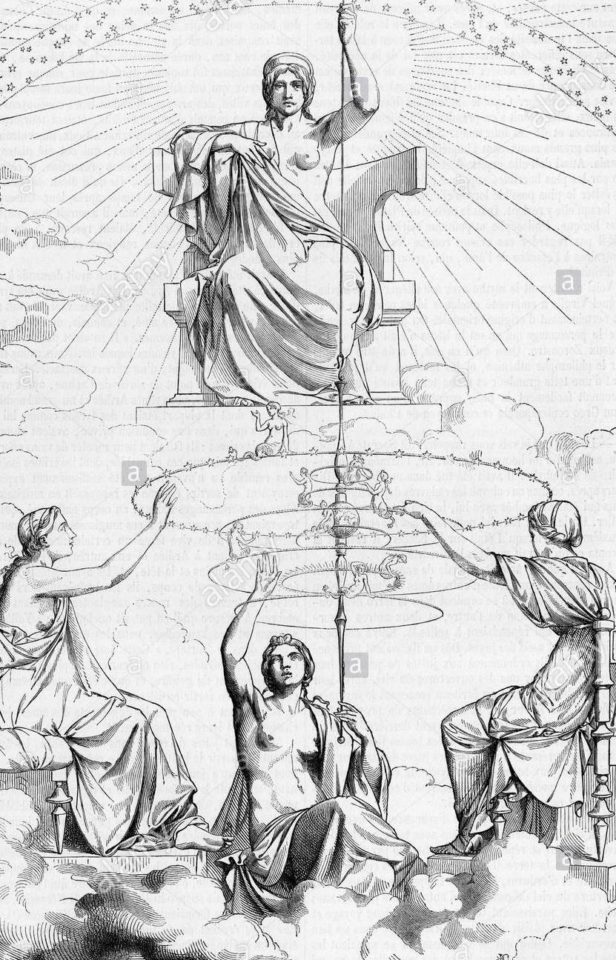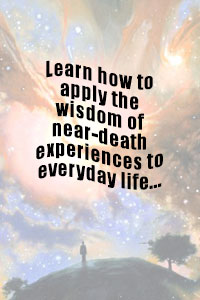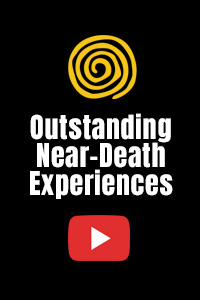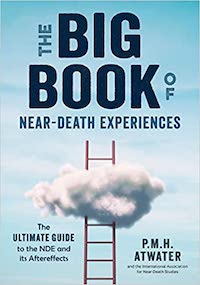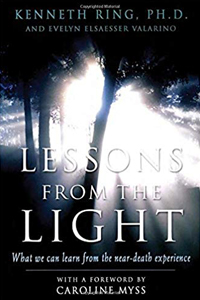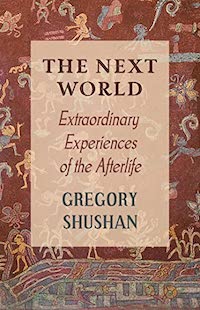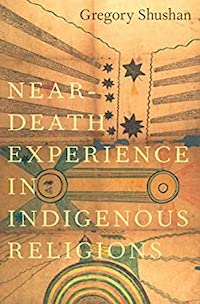The Greeks: Introduction
They were an extraordinary people born of white rock and blue sea. They invented democracy, distilled logic and reason, wrote plays to plumb the deepest recesses of the soul, and captured the perfection of the human form in athletics and art. Quite simply, the Greeks created our world.
………………..
The Greeks: Episode 1 – Cavemen To Kings
Learn about the dawning of the first great European civilization: the ancient Greeks. Learn about the dawn of the Stone Age and powerful myths the Greeks used to explain their place in the world. Then follow along to learn about the ancient Greek seafarers of the Bronze Age, the Minoans and Mycenae who lived on Crete and beyond. Finally, discover their downfall, as the first age of the Greeks descended into darkness.
Original Link for The Greeks: Episode 1 – Cavemen To Kings
………………..
The Greeks: Episode 2 – The Good Strife
Find out about the great legacies the ancient Greeks gave to Western civilization. Discover the origins of storytelling and literature, science and mathematics, philosophy and democracy as this episode traces the achievements of the ancient Greeks.
Original Link for The Greeks: Episode 2 – The Good Strife
………………..
The Greeks: Episode 3 – Chasing Greatness
What are the lasting contributions of the ancient Greeks? Discover the Golden Age of Greek civilization, heralded by philosophy and democracy. As runners travel 150 miles between Sparta and Athens, learn about great city states rise and fall as they battle the Persian Empire, plagues, and eventually, themselves. Investigate the lasting impact Greece had on the world today.
Original Link for The Greeks: Episode 3 – Chasing Greatness
………………..
What Caused “The First Dark Age” aka “The Greek Dark Age” — The Worst Collapse In Human History?
From the National Geographic series “The Greeks”
• Greek economy in shambles
• Wealth gap widens between rich and poor
• Global markets melt down
• Refugee crisis
• Drought
• Famine
• Earthquakes
• Invaders
• Internal rebellion
• Mystery warriors from the sea
All, or some of these issues, brought the Mycenaeans to their knees.
Over a period of 200 years, you go from the height of civilization to almost nothing. The great empires are gone. No more Mycenaeans. No more Hittites. No more Assyrians. No more Babylonians. Even the Egyptians had been so weakened that they are just a shadow of what they had once been. This was the worst collapse in human history. Civilization suffered a tragic blow. This time period is referred to as “The First Dark Age” or “The Greek Dark Age.”
………………..
The Ancient Greeks: Crucible of Civilization
It was perhaps the most spectacular flourishing of imagination and achievement in recorded history. In the Fourth and Fifth Centuries BC, the Greeks built an empire that stretched across the Mediterranean from Asia to Spain. They laid the foundations of modern science, politics, warfare and philosophy, and produced some of the most breathtaking art and architecture the world has ever seen. This series, narrated by Liam Neeson, recounts the rise, glory, demise and legacy of the empire that marked the dawn of Western civilization. The story of this astonishing civilization is told through the lives of heroes of ancient Greece. The latest advances in computer and television technology rebuild the Acropolis, recreate the Battle of Marathon and restore the grandeur of the Academy, where Socrates, Plato and Aristotle forged the foundation of Western though. The series combines dramatic storytelling, stunning imagery, new research and distinguished scholarship to render classical Greece gloriously alive.
………………..
Episode 1: The Revolution
The first part tells the story of the troubled birth of the world’s first democracy, ancient Athens, through the life of an Athenian nobleman, Cleisthenes. In the brutal world of the 5th century BC, the Athenians struggle against a series of tyrants and their greatest rival, Sparta, to create a new “society of equals.” This documentary makes history entertaining as well as educational. Beautifully photographed, using reenactments, paintings, maps, pottery, metalwork, and “living statues” to take the viewer on a vicarious journey through ancient Greece. Episode one, The Revolution, begins at the dawn of democracy in 508 B.C., with the revolution of the common people against aristocratic rule. The film then travels further back in time to chronicle the key events leading up to the revolution. As the camera roams ancient ruins, the Greek countryside, and old stone roads, the viewer learns that the inhabitants of Greece once lived in mud houses with no sewage and frequently fell prey to disease and warfare. Unable to write, they memorized their works of literature in order to pass them on to the next generation. Over time, their hardship and learning whetted their appetite for freedom. After rule by tyrants of the aristocratic class and a struggle for power, Cleisthenes (570-507 B.C.), himself an aristocrat, sided with the common people of Athens and brought democracy into being. From this beginning, western democracy developed and flourished. All the while during their early maturation into a Mediterranean power, Athens and other city-states had to live with the threat of war from expansionist Sparta as well as the vast Persian Empire. But democracy had taken root, and it proved in the long run to be a greater force than the mightiest of armies. The program closes on the eve of the new society’s first great test: invasion by the mighty empire of Persia.
Original Link for Episode 1: The Revolution
………………..
Episode 2: Golden Age
The second part recounts the Greeks’ heroic victory against the mighty Persian empire through the life of Themistocles, one of Athens’ greatest generals.The episode opens in 490 B.C. when tiny Athens prepares to safeguard its growing economy and infant democracy against an invasion by Persian armies of Darius the Great. When the Persians arrive for battle, the Greek courier Phidippides runs 140 miles to Sparta in two days to solicit help from its army, according the historian Herodotus. But Sparta, Athens’ rival, refuses to participate. The outnumbered Athenians, fighting to uphold their life of freedom, defeat the Persians and send them in humiliation back to Asia. But one Athenian, Themistocles, realizes Athens has not seen the last of the proud Persians. He persuades city leaders to build a fleet of war ships. These ships, called triremes, are “floating missiles” with projecting bows designed specifically to ram enemy vessels. While the Athenians execute their plans, the Persian ruler Darius dies and his son Xerxes succeeds to the throne. Under pressure to take revenge against the Greeks, he assembles an army of two million men. When the terrified Greeks ask the Delphic Oracle for advice, she simply tells them to flee. But Themistocles refuses to panic. Instead, he again petitions the Delphic Oracle, and this time she predicts that a “wooden wall” will protect the Greeks. First, he orders Athens abandoned, installs his fleet at the Aegean island of Salamis, and sends a “traitor” to the Persians to tell them that the Athenians are fleeing and are easy prey for the Persian fleet. When Persian ships move into the strait between Salamis and the Greek mainland, the triremes ram and sink 200 Persian vessels, and Athens wins the war. Greece, now master of the Mediterranean, undergoes one of the most startling intellectual and physical transformations in history. Pericles, the elected leader of Athens, oversees the building of the Parthenon and an extraordinary flourishing of the arts and sciences, laying the foundation for what is now called “Western culture.”
Original Link for Episode 2: Golden Age
………………..
Episode 3: Empire Of The Mind
The final segment describes how Athens, at the height of her glory, engaged in a suicidal conflict with her greatest rival, Sparta. Through the eyes of Socrates, Athens’ first philosopher, viewers see the tragic descent of Athenian democracy into mob rule.The episode opens in 399 B.C., after the great philosopher Socrates has been sentenced to death and Athens lies in ruins after a war with Sparta. This episode goes back to 431 B.C., to an Athens at the height of its cultural, political, and economic power. Having taken great leaps forward in every field of learning, and with a strong economy that dominates Mediterranean trade, Athens and its 150,000 residents are the envy of their neighbors, in particular, bellicose Sparta. Jealous of Athenian success, the Spartans yearn to spill Athenian blood and dominate the region. Of course, Pericles knows what is coming, and he orders the citizens to abandon open areas and take refuge inside the walls of Athens. The mighty Athenian fleet will provide supplies for the citizens through the port of Piraeus and a walled corridor between that city and Athens. Over time, the navy will prevail, as it had against the Persians, and win yet another victory. Much is at stake — democracy, freedom, the whole Athenian way of life. As expected, the Spartans invade and burn the open areas around the city. But it is the unexpected that deals the most devastating blow to Athens. Incoming ships with supplies for the walled-in Greeks carry plague-bearing rats feeding on grain. The disease ravages the Athenians, inflicting agony on them and killing one out of every three. The Spartans are of little concern; what matters is surviving until tomorrow. Pericles’ esteem plummets even as he himself contracts the plague and eventually dies. Finally in 404 B.C., Athens surrenders. The Athenians, shattered and stripped of their empire, take revenge on their most vocal critic and condemn Socrates to death before a people’s court.
Original Link for Episode 3: Empire Of The Mind
………………..
Related Links:
• Wikipedia on Ancient Greece
• National Geographic: Ancient Greece
• World History: Ancient Greece
• 9 Greek Philosophers Who Shaped The World
• Prostitution In Ancient Greece And Rome
• Pedophilia In Ancient Greece And Rome
• Incest In Ancient Greece And Rome: How Was It Viewed?
• Poison In Ancient History: 5 Illustrative Examples Of Its Toxic Use
• Death In Ancient Rome: The Fascinating Relationship Between Life And Death
• How Civilizations Collapse
• From Medieval Times To Our Current Crisis, Plagues Often Accelerate Extremist Movements
• We’re ‘Collapsologists’ Living Off The Land In Case Civilisation Crumbles
• Near-Death Experiences That Predict The End Of The World
………………..
6 Amazing Breakthroughs Made by the Ancient Greeks
History Facts
For more than two millennia, the ideas of the ancient Greeks have spurred some of humanity’s greatest achievements. Philosophy, drama, science, and mathematics sprung from that particular peninsula in the Mediterranean. The work of the Greek scholars propelled Muslim thinkers during the Islamic Golden Age, and the European rediscovery of their ancient texts ignited the Renaissance and sustained the Enlightenment, giving way to new scientific advancements and even new ways of living and governing. These are six amazing breakthroughs from ancient Greece, born from some of history’s greatest minds.
Pythagoras’ Theorem Formed the Foundation of Geometry
Pythagoras of Samos is arguably the most famous mathematician from ancient Greece (and there were a lot of them), and that’s because nearly every person at some point in their educational journey is taught his eponymous theorem. Expressed as a2 + b2 = c2, the Pythagorean theorem states that the square of two sides of a right triangle is equal to the hypotenuse. In ancient times, this proved the existence of irrational numbers and formed the cornerstone of what became Euclidean geometry (more on Euclid later), which plays a very real role in construction and navigation today. Some of the world’s smartest minds have set out to provide proofs of the Pythagorean theorem, including Albert Einstein (he was 12 at the time), and new proofs are still being discovered to this day. Simply put, the world would be a very different place without Pythagoras’ triangular insight.
Hippocrates Looked for a Scientific Cause of Illness
Watch any kind of medical drama, and it won’t be long before you hear the phrase “Hippocratic oath,” meaning a doctor’s sacred duty to “do no harm.” Although a bit of a myth in today’s hospitals, the oath is a lasting testament to the life and work of Hippocrates of Cos. Living in the fifth century BCE, Hippocrates was one of the world’s first physicians to explore the cause of illness beyond the usual divine explanations at the time (Zeus’ displeasure, for instance). He’s known as the “father of medicine” because he took a scientific approach to studying illness and tried devising treatments, as described in the 60 or so of his writings that survive to this day. Hippocrates influenced many future generations, but his most important student was arguably Galen of Pergamum in the second century CE, a Roman physician whose work became bedrock of European and Arabic medicine for more than a millennium, and who once claimed that all his knowledge originated with Hippocrates.
Aristotle Devised a System for Classifying Animals
During Aristotle’s astounding life in the fourth century BCE, he wrote about a cornucopia of scientific subjects including physics, psychology, economics, ethics, government, and poetry. But what is often lost in that academic deluge is the fact that Aristotle was 2,200 years ahead of his time in the field of biology. Today, we classify animals using Latin names in a system devised by Swedish botanist Carl Linnaeus in the 18th century, but Aristotle created a classification system back in ancient Greece that was remarkably similar to our modern one. Aristotle separated animals into two groups: those with blood and those without blood (or at least red blood), and while Linnaeus didn’t use this particular distinction, it is similar to how the animal kingdom is separated into vertebrates (those with spines) and invertebrates. From there, the Greek thinker divided animals into “genera,” which were broader categories than the genus distinction we use today, and then by species. This groundbreaking foresight into ordering the natural world is why Aristotle is remembered today as the “father of zoology.”
Euclid Knew That Light Traveled in a Straight Line
Euclid, considered the “father of geometry,” was no slouch when it came to studying the nature of light and vision. Published in 300 BCE, his work Optics is considered the first time a scholar gave serious scientific thought to the nature of light. Euclid theorized that light propagated in rays and traveled in a straight line, a big departure from the Platonic idea of light as an “ethereal emanation.” The nature of light and human vision became a vast field of study, interesting Romans, Muslim astronomers, Renaissance thinkers, Enlightenment scientists, and even 20th-century minds. Albert Einstein, for example, won the 1921 Nobel Prize in physics not for his general theory of relativity (as often presumed) but for a discovery in the field of optics known as the photoelectric effect.
Aristarchus Knew the Planets Orbited the Sun
The publication of Nicolaus Copernicus’ Six Books Concerning the Revolutions of the Heavenly Orbs in 1543 is a major moment in history, as the Polish scientist’s heliocentric theory directly challenged Catholic dogma proclaiming that the Earth was at the center of the solar system. In reality, Copernicus was mostly reiterating what some ancient Greeks knew nearly two thousand years before. In the third century BCE, Aristarchus of Samos (likely drawing from the work of another Greek astronomer, Philolaus of Croton) theorized that the sun was much more massive than the Earth, and he placed the planet in its rightful orbit around the star — the first heliocentric model of the solar system. Much like Copernicus’ work, Aristarchus’ theory was met with pushback (with one Stoic saying he should be indicted for “putting into motion the hearth of the universe”) and his ideas were ultimately rejected. This allowed geocentrism to flourish for far too long until Copernicus, citing both Philolaus and Aristarchus, eventually set the record straight.
Eratosthenes Accurately Measured the Globe
Around the same time Aristarchus was configuring the solar system into its rightful arrangement, the Greek mathematician Eratosthenes of Cyrene pulled off one of the greatest calculations in world history. For nearly 300 years, the ancient Greeks had known the Earth was round — Pythagoras established as much back around 500 BCE — but understanding that the Earth was a globe and comprehending its precise proportions were two different things entirely, and Eratosthenes set out to solve the latter. On the summer equinox in 240 BCE, Eratosthenes measured a shadow cast by a stick in Alexandria, Egypt, that measured 7.12 degrees (roughly one-fiftieth of a circle). Meanwhile, in Syene (modern-day Aswan, Egypt), a particular well cast no shadow, meaning the sun was directly overhead. The mathematician then hired surveyors to measure the distance from Alexandria to Syene and came up with 5,000 stadia. This measurement enabled him to calculate the Earth’s circumference at 250,000 stadia, or somewhere between 24,000 and 29,000 miles (the exact length of a stadium is debated). Today, we know the Earth measures about 24,900 miles around the equator. In other words, even over 2,200 years ago, Eratosthenes just about got it right.
………………..
10 Ancient Greek Inventions That Will Surprise You
10. Central Heating
9. Bridges
8. Lighthouses
7. Catapults
6. Musical Instruments
5. Chewing Gum
4. Cranes
3. Syringes
2. Sports
1. Philosophy
………………..
The Wisdom Of Hippocrates, “The Father Of Medicine” (460 BC – 370 BC)
“Foolish the doctor who despises the knowledge acquired by the ancients.”
“Positive health requires a knowledge of man’s primary constitution and of the powers of various foods, both those natural to them and those resulting from human skill. But eating alone is not enough for health. There must also be exercise, of which the effects must likewise be known. The combination of these two things makes regimen, when proper attention is given to the season of the year, the changes of the wind, the age of the individual, and the situation of his home. If there is any deficiency in food or exercise, the body will fall sick.”
“If we could give every individual the right amount of nourishment and exercise, not too little and not too much, we would have found the safest way to health.”
“Illnesses do not come upon us out of the blue. They are developed from small daily sins against Nature. When enough sins have accumulated, illnesses will suddenly appear.”
“Walking is a man’s best medicine.”
“Rest as soon as there is pain.”
“Nature itself is the best physician.”
“Our food should be our medicine and our medicine should be our food.”
“Everyone has a doctor in him or her; we just have to help it in its work. The natural healing force within each one of us is the greatest force in getting well.”
“If you are not your own doctor, you are a fool.”
See also: Sunfellow Health & Healing Resource Page
……………..
The Antikythera Mechanism
………………..
The Antikythera Mechanism
The Antikythera Mechanism is an ancient Greek hand-powered device, widely considered the world’s first analog computer and orrery (a mechanical model of the solar system). It was designed to predict and display astronomical phenomena, including the positions of the Sun, Moon, and known planets, as well as to forecast solar and lunar eclipses, track the phases and age of the Moon, and follow the cycles of ancient athletic games such as the Olympiad.
The mechanism was discovered in 1901 by sponge divers investigating a Roman-era shipwreck off the coast of the Greek island of Antikythera. The shipwreck itself dates to between 60 and 70 BCE, but the device may have been constructed as early as the late 2nd century BCE (around 205–60 BCE).
The Antikythera Mechanism could:
• Predict the positions of the Sun, Moon, and planets for any chosen date in the past or future.
• Calculate the timing of solar and lunar eclipses using complex cycles such as the Saros and Metonic cycles.
• Track lunar phases and the age of the Moon.
• Display the dates of major athletic competitions, like the ancient Olympic Games.
• Indicate the heliacal risings and settings of prominent stars and constellations.
The device was housed in a wooden box with bronze gears and dials, and it was operated by turning a hand crank. Its complexity and precision are unmatched by any other known artifact from antiquity, and it incorporates knowledge from both Babylonian and Greek astronomy. The mechanism’s fragments, now totaling 82, are preserved at the National Archaeological Museum in Athens.
In summary, the Antikythera Mechanism is a remarkable testament to ancient Greek engineering, serving as a sophisticated astronomical calculator and predictive tool over two millennia ago. No other ancient devices like the Antikythera Mechanism — sometimes called the “Antikythera Cosmos” — have ever been discovered. The Antikythera Mechanism remains unique; it is the only known example of such a sophisticated ancient Greek analog computer or astronomical calculator.
………………..
The Antikythera Cosmos
………………..
Scientists Have Unlocked the Secrets of the Ancient ‘Antikythera Mechanism’
By Becky Ferreira
Vice
March 12, 2021
A digital model has revealed a complex planetarium on the ancient device’s face. “Unless it’s from outer space, we have to find a way in which the Greeks could have made it,” researchers say.
In the early 1900s, divers hunting for sponges off the coast of Antikythera, a Greek island in the Aegean Sea, discovered a Roman-era shipwreck that contained an artifact destined to dramatically alter our understanding of the ancient world.
Known as the Antikythera Mechanism, the object is a highly sophisticated astronomical calculator that dates back more than 2,000 years. Since its recovery from the shipwreck in 1901, generations of researchers have marveled over its stunning complexity and inscrutable workings, earning it a reputation as the world’s first known analog computer.
The device’s gears and displays cumulatively demonstrated the motions of the planets and the Sun, the phases of the lunar calendar, the position of Zodiac constellations, and even the timing of athletic events such as the ancient Olympic Games. The device also reflects a very ancient idea of the cosmos, with Earth at the center.
While some of the calculator’s mysteries have been solved over the past century, scientists at University College London’s Antikythera Research Team present, for the first time, “a radical new model that matches all the data and culminates in an elegant display of the ancient Greek Cosmos,” according to a study published on Friday in Scientific Reports.
Led by Tony Freeth, a mechanical engineer at UCL and a leading world expert on the mechanism, the interdisciplinary team called the artifact “an ancient Greek astronomical compendium of staggering ambition” and “a beautiful conception, translated by superb engineering into a device of genius,” in the study.
“This is such a special device,” said Adam Wojcik, a materials scientist at UCL and a co-author of the study, in a call. “It’s just so out-of-this world, given what we know, or knew, about contemporary ancient Greek technology. It’s unique and there’s nothing else that remotely approaches it for centuries, or maybe a millennia afterwards.”
“However, it exists and all the scholarship points to the fact that it is ancient Greek,” added Wojcik, who has been fascinated by the artifact since he was a child. “There’s no question about it and we just have to accept that there is so much about what they could do that we just don’t know and we can’t fathom. The mechanism is a window on that.”
Understanding the clockwork instrumentation of the Antikythera Mechanism has been a longstanding challenge for scientists because only a third of the artifact survived its multi-millennia entombment under the Mediterranean waves. The remains of the calculator include 82 fragments, some of which contain complex gears and once-hidden inscriptions, which were wedged between front and back display faces during the bygone era in which the artifact was fully intact.
As new experimental techniques emerged, research teams have been able to explain the purpose and dynamics of the Antikythera Mechanism’s back face, which includes a system of eclipse predictions. In particular, the use of surface imaging and high-resolution X-ray tomography on the artifact, described in a 2006 study also led by Freeth, revealed scores of never-before-seen inscriptions that helpfully amount to a user’s guide to the mechanism.
Now, Freeth and his colleagues believe they have tackled the missing piece of the puzzle: the complicated gearworks underlying the front “Cosmos” display of the calculator. Virtually nothing from this front section survived, and “no previous reconstruction has come close to matching the data” that does exist, according to the study.
The new paper “has synthesized other people’s work, and dealt with all the loose ends and the uncomfortable nuances that other people just simply ignored,” Wojcik said. “For example, there are certain features in the surviving bits—holes and pillars and things like that—which people have said: ‘well, we’ll just ignore that in our explanation. There must be a use for that but we don’t know what it is so we’ll just ignore it.’”
“Effectively, what we’ve done is we’ve not ignored anything,” he added. “So the enigmatic pillars and holes, all of a sudden, now make sense in our solution. It all comes together and it fits the inscriptional evidence.”
The inscriptions from the 2006 study suggest that the missing Cosmos display was a moving set of rings charting out the motion of Mercury, Venus, Mars, Jupiter, and Saturn—each represented by a small gem—along with the path of the Sun, the phases of the Moon, and the positions of the Zodiac constellations. In addition to studying these inscriptions, the researchers created computer simulations and partial replicas of the device to test out their novel model.
One of the biggest hints emerged from analysis conducted in 2016 that revealed inscriptions in the front cover that included a pair of values, 462 years and 442 years, which the mechanism’s makers associated with Venus and Saturn. The researchers were able to identify a possible source for these numbers, derived from the work of the pre-Socratic philosopher Parmenides.
These values are ancient Greek calculations of the synodic periods of the planets, meaning they represent the time it takes for planets to return to the same apparent position in the sky as viewed from Earth, according to the study.
The cycles were complicated by the ancient belief that Earth was at the center of the solar system. This geocentric bias required the invention of complex models to account for the retrograde motion of planets: a phenomenon in which planets appear to move in occasional backward loops. The effect is an optical illusion that occurs when faster moving planets overtake slower counterparts during their orbits around the Sun, but the Greeks devised intricate mechanisms and cycles to find alternate explanations.
The synodic cycles revealed for Venus and Saturn enabled the team to reverse-engineer a system of gears with the right amount of teeth to produce the kind of planetary motion described in the inscriptions—complete with retrograde motions that showed up on the front face. This would be a relatively easy task for one planet, but representing all five known planets involved extremely ingenious engineers.
“If you’re going to show all the planets, you’re going to have to get all their positions correct,” explained Wojcik. “As you rotate the handle on the side of the mechanism, all these little planets start to move around like clockwork in this kind of mini-planetarium and occasionally, one of them will turn backwards, and then it would move forwards again, and then another one, further out, will start to turn backwards.”
“But at any one point, when you stop the machine, it’s got to give you a faithful reproduction of the heavens because that’s the purpose of the machine,” he said.
To recreate this effect in their model, the team deduced the cycles for the other planets, based on the Venus and Saturn data, then devised an elaborate system of gears that could reproduce them. The whole gear drive was meticulously optimized to fit into a small space between the front and back plates.
The complete digital reconstruction of the artifact is exceptionally intricate, so you should definitely watch the documentary embedded above to see the visualizations of all the overlapping gears, pins, dials, and plates that the team thinks meshed together into this mind-boggling astronomical computer.
The new work reveals a spectacular rendering of the complete mechanism, which comes closer to fitting all of the bizarre pieces of the puzzle together than any previous model. But that does not mean that the artifact has divulged all of its mysteries—not even close.
Freeth, Wojcik, and their colleagues now hope to replicate the full machinery of their model using the technologies available to its Greek creators, which presents both an enormous challenge and an exhilarating new chapter in the ongoing saga of the Antikythera Mechanism.
“It is so remarkable in terms of its requirements for accuracy and manufacturing ability that it’s out of sync with what we think Greeks could have achieved,” Wojcik said. “But we have to accept that that is the way the machine worked, and the Greeks made it.”
“Unless it’s from outer space, we have to find a way in which the Greeks could have made it,” he concluded. “That’s the next stage and the exciting bit is, I think that’s the final piece of the jigsaw.”
………………..
………………..
“The Boxer At Rest” – 330-50 BC
Sculpture of Ancient Greek Boxer Still Haunts Viewers Today
By Patricia Claus
Greek Reporter
March 28, 2021
The beloved ancient Greek sculpture called “The Boxer at Rest,” from 330-50 BC, one of the most realistic of all ancient Greek sculptures, is one of the most touching and emotive works of art from that period, reminding us that the pain and difficulties of human life are universal and beyond the bounds of time.
Created in an era when Hellenistic sculptors had gone beyond stylized, formal shapes and begun to portray humans with complete realism, the masterpiece is so lifelike that its viewers almost expect to see the man begin to move and speak.
It is difficult to believe how an ancient work of art could so encapsulate the realistic portrayal of ordinary people that only became the norm in modern times.
Unearthed in the gardens of Rome’s Quirinale Palace in 1885, it had been carefully buried centuries earlier — perhaps by people who did not want their beloved Boxer to become a victim of those who in Christian times were known to melt down pagan bronze sculptures.
In nearly perfect condition after almost twenty centuries, the sculpture is a flawless portrayal of the pain and suffering of ancient Greek boxers, while portraying the great dignity of a man who has fought for decades and yet still seems to be looking toward the viewer asking, “Must I fight again? Haven’t I done enough?”
The boxer is shown wearing the leather hand wrappings, or caestus, that pugilists from those times always wore in fights. These would serve as the only protection for boxers, who, like all other athletes, would compete in the nude.
It is possible that the Boxer had once graced the grounds of the Baths of Constantine. After the Goths invaded Rome, they destroyed the aqueducts that had led to the great city, leaving the Baths dry and leading to the decay of the entire area.
Like the statue of St. Peter at the Vatican, the fingers and toes of the Boxer had been worn down from many years of rubbing by those who visited the statue — leading experts to believe that the Boxer came to have magical or talismanic powers. This may have been why the sculpture had been buried so very carefully in later times.
As viewers have noticed over the centuries, the athlete’s broken, flattened nose, cauliflower ears and mien of complete exhaustion evoke a feeling of weariness, and perhaps even desperation, at the end of the man’s career.
Perhaps the artist wanted to portray the apprehension of an athlete at the end of his glory days, facing what he thinks may be oblivion after decades of fame and adulation, looking with dread into an uncertain future.
The Boxer’s mouth and facial scars were actually inlaid with copper by the original artist, and other pieces of copper were inlaid on his shoulder, arm and thigh were meant to represent drops of blood, leading to an even more complete realism than we view today in the form.
Italian archaeologist Rodolfo Lanciani, officiated at the unearthing of the magnificent sculpture, later recorded his impressions of the monumental discovery at the Quirinale Palace.
“I have witnessed, in my long career in the active field of archaeology, many discoveries; I have experienced surprise after surprise; I have sometimes and most unexpectedly met with real masterpieces; but I have never felt such an extraordinary impression as the one created by the sight of this magnificent specimen of a semi-barbaric athlete, coming slowly out of the ground, as if awakening from a long repose after his gallant fights.”
Originally cast in eight pieces through the lost-wax process, later painstakingly soldered together, the bronze masterpiece was carefully conserved by art conservationist Nikolaus Himmelmann in 1989 before it went on display in Bonn, Germany.
………………..
Jesse & Eliot Discuss “The Myth Of Er” (One Of The Earliest Near-Death Experiences Ever Recorded)
………………..
The Myth of Er (423 – 347 BC)
According to Socrates from Plato’s Republic
The Myth of Er is a legend that concludes Plato’s Republic. The story includes an account of the cosmos and the afterlife that greatly influenced religious, philosophical, and scientific thought for many centuries.
The story begins as a man named Er dies in a battle. When the bodies of those who died in the battle are collected, ten days after his death, Er’s body remains undecomposed. Two days later, he revives on his funeral-pyre and tells others of his journey in the afterlife, including an account of reincarnation and the celestial spheres of the astral plane. The tale includes the idea that moral people are rewarded and immoral people punished after death.
Although called the Myth of Er, the word “myth” means “word, speech, account”, rather than the modern meaning. The word is used at the end when Socrates explains that because Er did not drink the waters of Lethe, the account (mythos in Greek) was preserved for us.
…
With many other souls as his companions, Er had come across an awe-inspiring place with four openings — two into and out of the sky and two into and out of the ground. Judges sat between these openings and ordered the souls which path to follow: the good were guided into the path into the sky, the immoral were directed below. But when Er approached the judges, he was told to remain, listening and observing in order to report his experience to humankind.
Meanwhile from the other opening in the sky, clean souls floated down, recounting beautiful sights and wondrous feelings. Those returning from underground appeared dirty, haggard, and tired, crying in despair when recounting their awful experiences, as each was required to pay a tenfold penalty for all the wicked deeds committed when alive. There were some, however, who could not be released from underground. Murderers, tyrants and other non-political criminals were doomed to remain by the exit of the underground, unable to escape.
After seven days in the meadow, the souls and Er were required to travel farther. After four days they reached a place where they could see a shaft of rainbow light brighter than any they had seen before. After another day’s travel they reached it. This was the Spindle of Necessity. Several women, including Lady Necessity, her daughters, and the Sirens were present. The souls — except for Er — were then organized into rows and were each given a lottery token.
Then, in the order in which their lottery tokens were chosen, each soul was required to come forward to choose his or her next life. Er recalled the first one to choose a new life: a man who had not known the terrors of the underground but had been rewarded in the sky, hastily chose a powerful dictatorship. Upon further inspection he realized that, among other atrocities, he was destined to eat his own children. Er observed that this was often the case of those who had been through the path in the sky, whereas those who had been punished often chose a better life. Many preferred a life different from their previous experience. Animals chose human lives while humans often chose the apparently easier lives of animals.
After this, each soul was assigned a guardian spirit to help him or her through their life. They passed under the throne of Lady Necessity, then traveled to the Plane of Oblivion, where the River of Forgetfulness (River Lethe) flowed. Each soul was required to drink some of the water, in varying quantities; again, Er only watched. As they drank, each soul forgot everything. As they lay down at night to sleep each soul was lifted up into the night in various directions for rebirth, completing their journey. Er remembered nothing of the journey back to his body. He opened his eyes to find himself lying on the funeral pyre early in the morning, able to recall his journey through the afterlife.
………………..
………………..
Related Links:
• Plato’s Near-Death Experience Testimony About The Soldier Named Er
• Wikipedia On The Myth Of Er
• Historical & Cross-Cultural Near-Death Experiences
• Hellish & Distressing Near-Death Experiences
………………..

